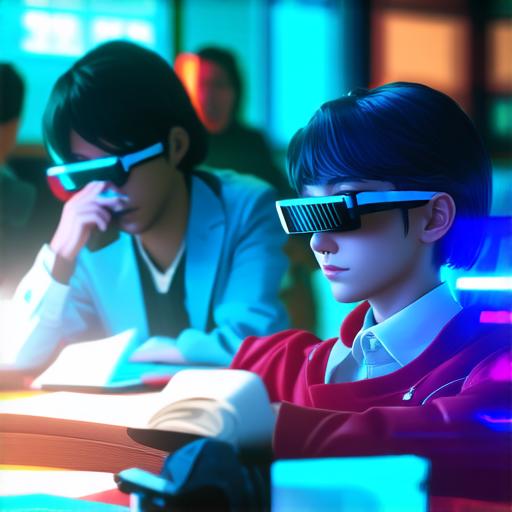Augmented reality (AR) is an emerging technology that has the potential to revolutionize the way students learn and interact with the world. AR combines digital information with the real world, allowing users to see and experience digital content in their physical surroundings.
In the context of education, AR can enhance learning by providing immersive and interactive experiences that help students to better understand complex concepts.
One of the key advantages of AR in educational settings is its ability to bring abstract concepts to life. For example, a biology teacher could use AR technology to create a 3D model of an organism, allowing students to explore its internal structures and functions in detail.
Similarly, an art teacher could use AR to create interactive installations that allow students to experiment with different color palettes and textures.
In addition to enhancing understanding, AR can also make learning more engaging. By providing interactive experiences that require physical movement and interaction, AR can help to keep students motivated and interested in their studies.
For example, an history teacher could use AR to create a scavenger hunt that takes students on a virtual tour of a historical site, allowing them to explore the location in a way that is both fun and educational.
There are also many practical applications for AR in education. For example, AR can be used to help students learn new languages by providing real-time translations of spoken words and phrases.
Similarly, it can be used to teach coding by allowing students to write and test code directly on a virtual object or interface.
Despite its potential benefits, there are still many challenges associated with integrating AR technology into the classroom. One of the main challenges is the cost of equipment and software.
AR devices can be expensive, and not all schools have the budget to invest in this technology. Additionally, teachers may need to receive specialized training in order to effectively incorporate AR into their lessons.
Despite these challenges, there are many examples of successful AR implementations in education. For example, the company Aurasma has created an AR platform that is used by over 30,000 educators worldwide.

The platform allows teachers to create interactive experiences for their students using a wide range of content, including videos, images, and animations.
In conclusion, augmented reality has the potential to be a powerful tool in educational settings. By enhancing understanding and engagement, AR can help to make learning more immersive and effective. While there are still many challenges associated with integrating AR technology into the classroom, there are also many examples of successful implementation that demonstrate its potential benefits.
As the technology continues to evolve, it will be exciting to see how it is used in education in the future.
